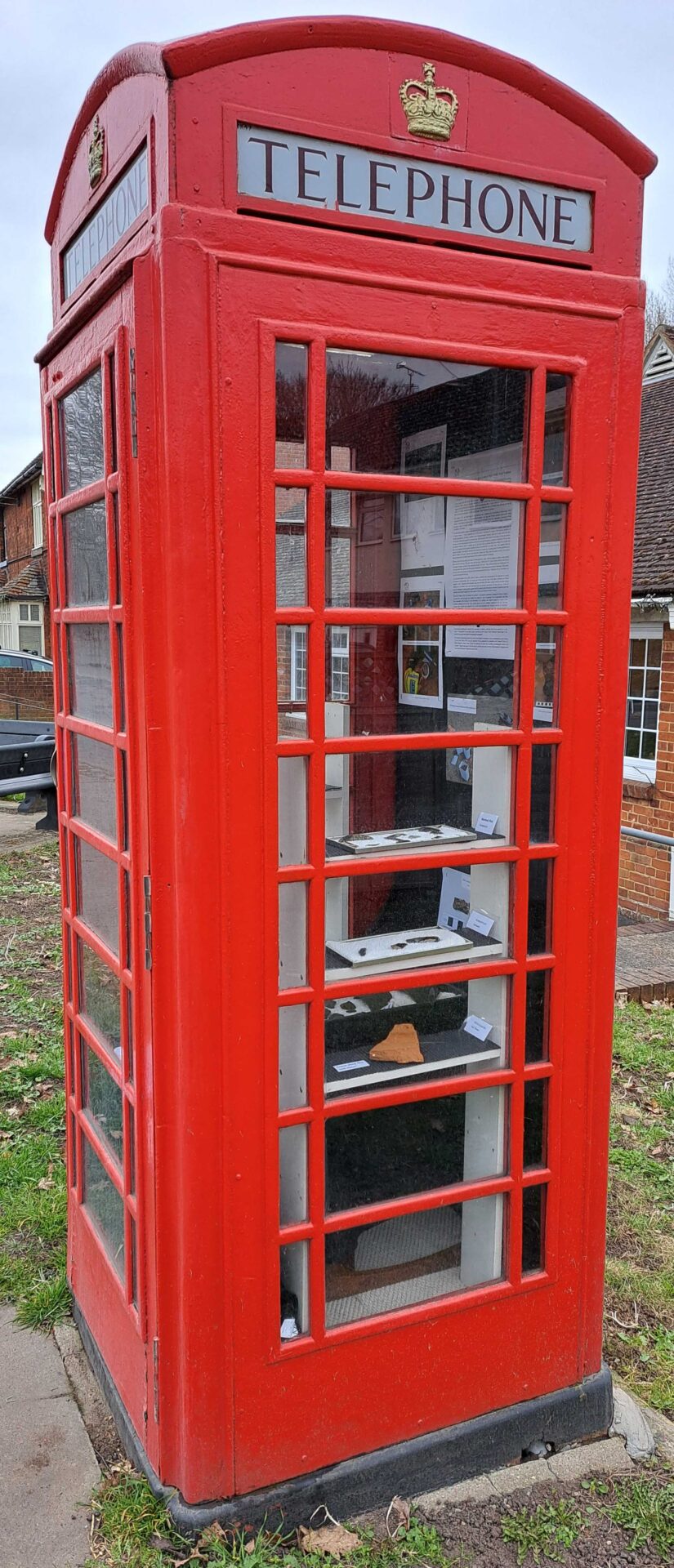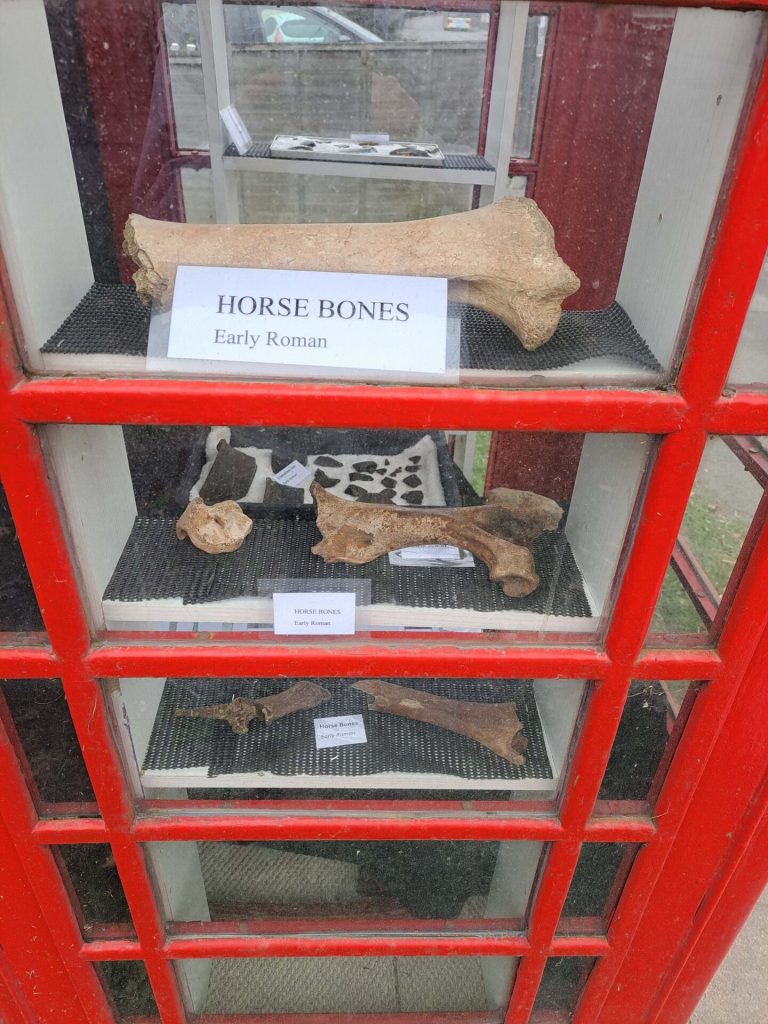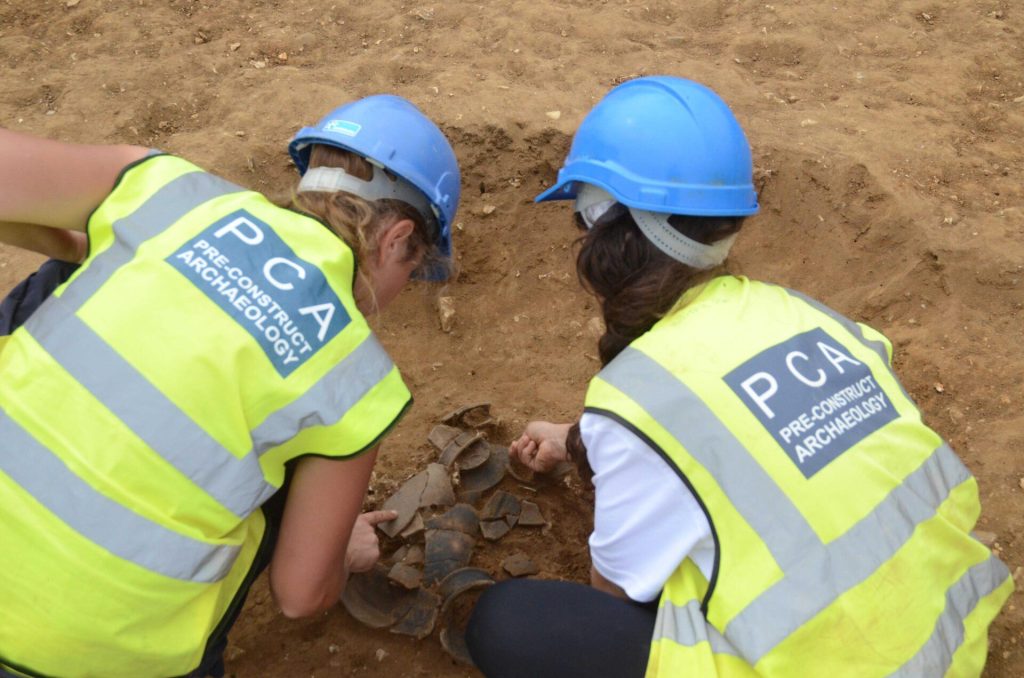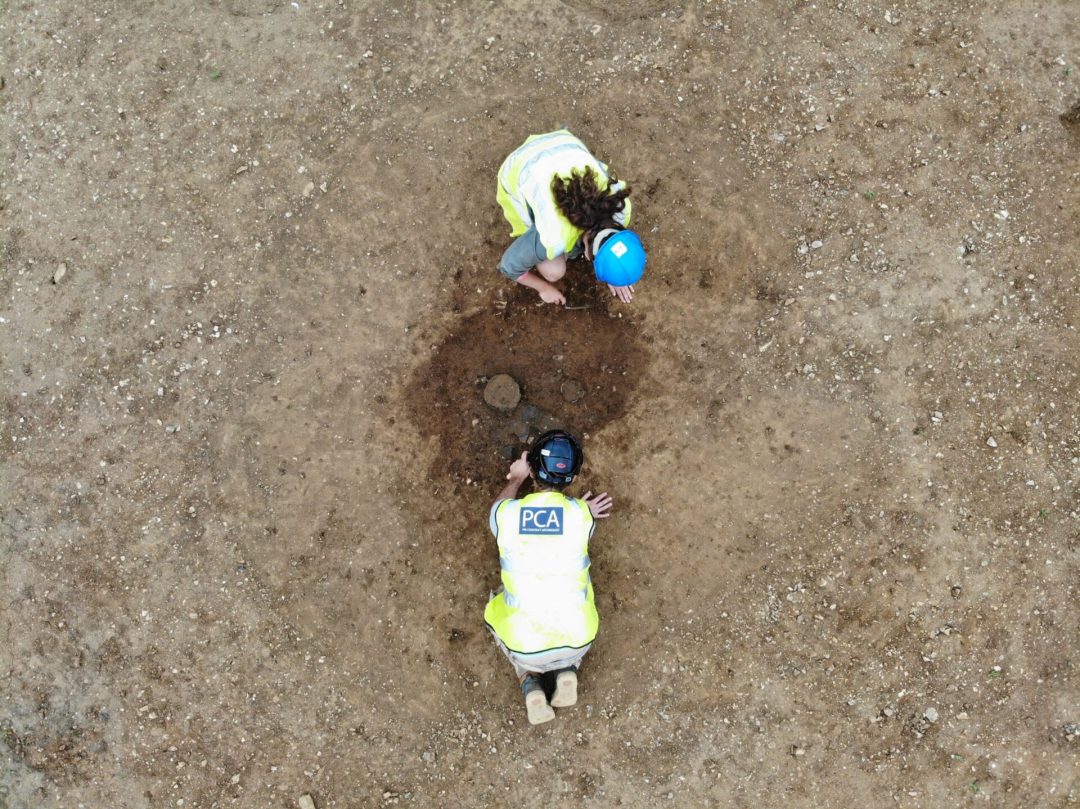A red phone box in Great Yeldham has been repurposed in an inspired way by the community: as a mini museum with a display of finds from our excavation in the village!



.
Prior to the construction of new homes, PCA undertook an archaeological investigation of the site. Trial trenching revealed artefacts dating from the Mesolithic/Neolithic, Iron Age and Roman periods so a second stage of fieldwork, consisting of three excavation areas, was carried out in the summer of 2021.

.
The earliest human activity encountered was a shallow pit or natural hollow containing 45 pieces of worked flint, including a bladelet core of Mesolithic/early Neolithic date (very broadly 8000–3000 BC), which also contained fragments of animal bone, charcoal and a few charred cereal grains. The site is close to a stream with a good source of flint pebbles suitable for knapping, and a passing band of hunter-gatherers had found it a good spot to spend time making tools and having a meal on at least one occasion.
Many millennia passed before humans left a further imprint on the site. In the Late Iron Age (100BC to AD43) several ditches were dug as part of a nearby farmstead’s extensive field boundary system. Few artefacts of this period were recovered from the ditches, indicating that the farmstead stood some distance from the site; this was further attested to by the discovery of a group of cremations dating to the same period.



.
Several of the cremation pits were furnished with grave goods, including fineware pottery vessels and a Chatelaine set, a belt adornment that was typically presented to Roman girls as a ‘coming of age’ gift. The range of grave goods suggests that the people buried here were moderately prosperous with access to markets supplying Roman goods in the years before the Roman invasion.
Around the middle of the 1st century AD, perhaps in the decade immediately following the Roman invasion, the area of the Late Iron Age ditch system and cremations was re-organised. This may have been associated with a change in land ownership, as no attempt was made to respect the location of the cremation cemetery and the new ditch system was set out on a different alignment. There was little evidence for domestic occupation, although a number of pits and postholes may be associated with agricultural activities. However, several of the ditches contained relatively sizeable assemblages of Roman pottery and a small Roman knife was recovered from one feature, suggesting that the ditch system lay close to an area of occupation, probably to the south or west of the site. In the western corner of the site two large Roman extraction pits were investigated (probably dug for clay), which were up to 30m in diameter and up to 2.4m deep. This part of the settlement appears to have fallen out of use in the 2nd century AD.
The process of examining the results of the excavation is currently underway and will be reported on in due course. The excavation has provided a great opportunity to learn about Great Yeldham’s distant past, in an area that has seen limited detailed archaeological investigation.
PCA would like to thank Rose Builders (Properties) Ltd for commissioning and funding the work, Nick Cooke of RPS Group for appointing PCA to undertake the excavation and Teresa O’Connor of Place Services at Essex County Council for monitoring the work and providing archaeological advice and guidance. Finally, a big thank you to Christine Caney and her husband for arranging the display.

